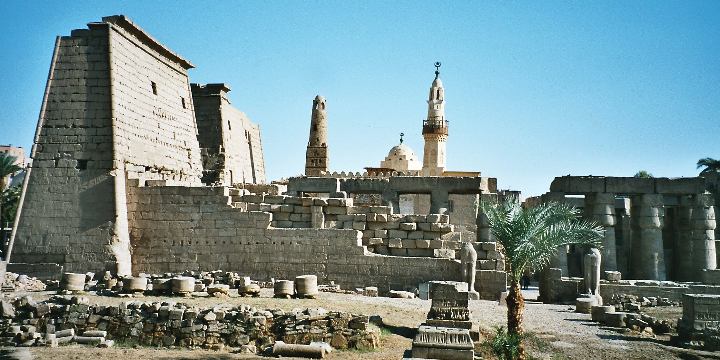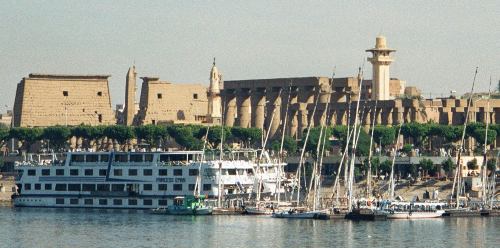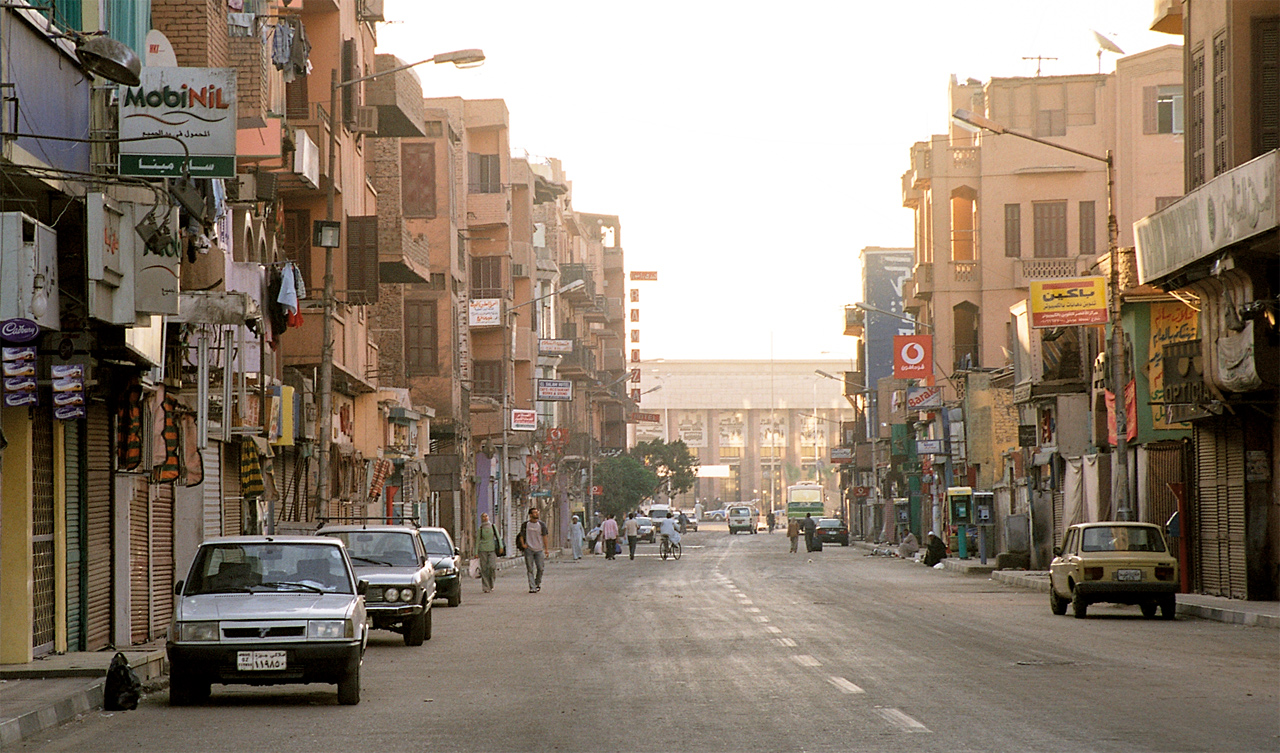
Luxor Temple
Luxor (Arabic: أَلْأُقْصُر Al 'Uqṣur) is a city in Upper (southern) Egypt and the capital of Luxor Governorate. The population numbers 487,896 (2010 estimate), with an area of approximately 416 square kilometres (161 sq mi).As the site of the Ancient Egyptian city of Thebes, Luxor has frequently been characterized as the "world's greatest open air museum", as the ruins of the temple complexes at Karnak and Luxor stand within the modern city.

Immediately opposite, across the River Nile, lie the monuments, temples and tombs on the West Bank Necropolis, which include the Valley of the Kings and Valley of the Queens. Thousands of international tourists arrive annually to visit these monuments, contributing a large part towards the economy for the modern city.

Streets of Luxor
Sights of modern-day Luxor
l Luxor Temple
l Luxor International Airport
l Karnak Temple
l Luxor Museum
l Mummification Museum
l Winter Palace Hotel
West bank
l Valley of the Kings
l Valley of the Queens
l Medinet Habu (memorial temple of Ramesses III)
l The Ramesseum (memorial temple of Ramesses II)
l Deir el-Medina (workers' village)
l Tombs of the Nobles
l Deir el-Bahri (Mortuary Temple of Hatshepsut, etc.)
l Malkata (palace of Amenophis III)
l Colossi of Memnon (memorial temple of Amenophis III)

Luxor railway station
A caleche four wheel carriage

Hot-air ballooning over the west bank

Street market in Luxor

Pharaonic statue in Luxor Temple
Luxor Temple
Luxor Temple is a large Ancient Egyptian temple complex located on the east bank of the River Nile in the city today known as Luxor (ancient Thebes) and was founded in 1400 BCE. , Known in the Egyptian language as ipet resyt, or "the southern sanctuary", the temple was dedicated to the Theban Triad of Amun, Mut, and Chons and was built during the New Kingdom, the focus of the annual Opet Festival, in which a cult statue of Amun was paraded down the Nile from nearby Karnak Temple (ipet-isut) to stay there for a while, with his consort Mut, in a celebration of fertility – whence its name.

Entrance of Luxor Temple
The earliest parts of the temple still standing are the baroque chapels, just behind the first pylon. They were built by Hatshepsut, and appropriated by Tuthmosis III. The main part of the temple - the colonnade and the sun court were built by Amenhotep III, and a later addition by Rameses II, who built the entrance pylon, and the two obelisks (one of which was taken to France, and is now at the centre of the Place de la Concorde) linked the Hatshepsut buildings with the main temple.

Luxor Temple, from the east bank of the Nile
To the rear of the temple are chapels built by Tuthmosis III, and Alexander. During the Roman era, the temple and its surroundings were a legionary fortress and the home of the Roman government in the area.
Hundreds of sphinxes once lined the road to nearby Karnak
A well preserved sphinx

The massive First Pylon
The red granite obelisk
The central corridor of the temple

Islamic mosque over pharaonic temple

Sitting Ramesses II Colossus inside Luxor Temple

Closeup of the same Colossus

Amenhotep's colonnade from the peristyle court
The east side of the peristyle court of Amenhotep III
Roman mural in an inner chamber

Central corridor and four colossi by night

Closeup of illuminated red granite obelisk

Sitting Ramesses II Colossus inside Luxor Temple by

Wall inscription
You have read this articleEgypt
with the title Luxor. You can bookmark this page URL http://oinsweden.blogspot.com/2014/08/luxor.html. Thanks!
Write by:
AN - Monday, August 11, 2014







.jpg)


Comments "Luxor"
Post a Comment